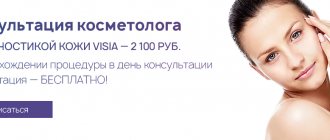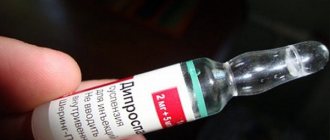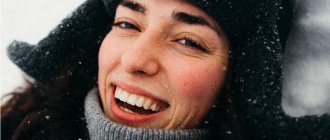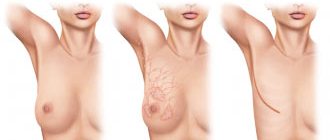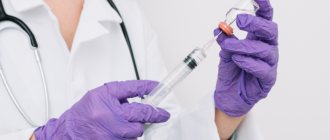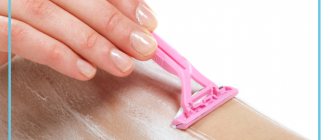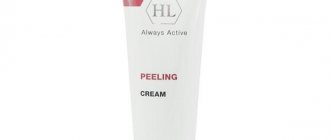Herpes viral infection in dermatocosmetology practice
Innovative technologies used in the cosmetology industry enable the modern woman to effectively neutralize congenital and acquired cosmetic imperfections, significantly improve her appearance, and actively fight the aging process of the skin. The face, being a means of communicative interaction between people, along with other open areas of the skin, has a special psychological significance for the individual. These zones are the most important for realizing one’s own attractiveness, perfect appearance and are the objects of constant cosmetic manipulation, especially for women. Cosmetology, designed to improve primarily the aesthetic function of the skin, is an integral part of dermatology. Therefore, dermatocosmetologists must not only be fluent in modern methods used in cosmetology, but also have fundamental knowledge in the field of dermatology. They should be well aware of the pathological processes that most often occur in the facial area, which can lead to certain cosmetic defects, as well as affect the outcome of cosmetic procedures or be a contraindication for a particular procedure. For many representatives of the fair sex, especially at a young age, any rashes on the skin of the face are regarded as cosmetic defects. As a result, they often turn for first aid not to a dermatologist, but to a cosmetologist. Therefore, knowledge of the clinical symptoms and principles of treatment of dermatoses of facial localization is a necessary basic basis for the activity of any dermatocosmetologist [1, 4]. Currently, among a large group of dermatoses localized in the facial area, virus-associated dermatoses and, first of all, facial manifestations of herpes simplex (HS) deserve special attention. Herpes simplex virus (HSV) is a DNA-containing virus and belongs to the subfamily of α-herpes viruses, characterized by a short reproduction cycle, high tropism for epithelioid cells, as well as a pronounced cytotoxic effect. In the past, there was an opinion that HSV-1 selectively affects the facial area, and HSV-2 – the external genitalia, but in recent decades, data on their general tropism have been obtained; moreover, the role of HSV-1 in the development of genital herpes throughout the world is constantly increases. Thus, HSV-1 causes facial herpes in 80–90% of cases, and HSV-2 – in 10–20% [5, 6]. Currently, the incidence of AI is extremely high; according to WHO statistics, it ranks second among viral infections, second only to influenza. About 90% of the adult population of the planet is infected with HSV-1, the prevalence of HSV-2 ranges from 7 to 40%. According to leading experts, in our country the annual incidence of lip herpes is 10 million, skin herpes – 1 million, and ophthalmic herpes – 250 thousand cases. Studies have shown that by the age of 18, more than 90% of the world's inhabitants are infected with one or more strains of the herpes virus. Recurrent forms of herpes affect 10 to 20% of the population, and the annual increase increases by 15–17%. According to foreign studies, only 20% of those infected with the herpes virus are diagnosed with this disease; in 60%, the herpes infection, despite obvious symptoms, remains unrecognized. And in approximately 20% of the population the disease occurs in a latent form [5–10]. Having entered the human body by contact or, less commonly, by airborne droplets, the virus remains there for life, remaining in the sensory paravertebral ganglia. Exacerbations of herpes infection can occur after exposure to various provoking factors: hypothermia, insolation, mental stress, physical activity, mechanical trauma, alcohol intake, changes in hormonal rhythms (for example, menstruation), weakened immunity. The facial area is one of the most favorite localizations for manifestations of PG. The rashes are most often located on the red border of the lips, the vestibule and wings of the nose, the perioral region, on the chin, and much less often in the cheeks and forehead [2, 8, 10]. In clinical practice, the most common form of recurrent PG is the most common. Regardless of the location of the pathological process, the disease in most cases begins with subjective sensations - harbingers of relapse - on average one day before the appearance of rashes, which manifest themselves as mild sensations in the form of tingling, itching, burning. There may also be a disturbance in the general condition: a feeling of weakness, chills, fever. After 1–2 days, erythema appears in the area of projection of subjective symptoms, accompanied by moderate swelling, against the background of which small grouped hemispherical bubbles begin to form. The contents of the bubbles are initially transparent, then become cloudy. After existing for several days, they turn into erosions covered with thin serous crusts. After 7–9 days, the crusts are rejected, leaving behind a pinkish or brownish-brown secondary stain, which usually regresses after 7–14 days. In some patients with frequent relapses of herpes in the same place or with the addition of a secondary infection, shallow small scars may remain at the site of resolved herpetic rashes. Recurrence of PG is often accompanied by a reaction from the lymphatic system in the form of regional lymphadenitis and lymphangitis, the addition of a secondary infection, and symptoms of damage to the peripheral nervous system. In more severe cases, skin manifestations of herpetic infection are aggravated by symptoms of general intoxication: low-grade fever, sweating, headache, malaise, joint pain, gastrointestinal disorders [4, 5, 8]. In more rare cases, atypical manifestations of PG are observed. Thus, with the addition of a secondary streptococcal infection, massive brownish and long-lasting crusts are formed (rupioid form of herpes). The formation of hemorrhagic exudate in blisters, shrinking into bloody crusts, accompanied by severe pain, characterizes the hemorrhagic form. When the viral process is localized in areas with loose subcutaneous fat (lips, periorbital area), an edematous form occurs. It is characterized by severe swelling without the formation of bubbles and crusts. Frequent exacerbations of this form of PG can lead to the development of elephantiasis-like form (dense chronic edema, increasing from relapse to relapse). In the zosteriform form, the rashes are accompanied by the development of pain due to the involvement of various pairs of cranial nerves (usually trigeminal and facial) in the pathological process. In most cases, severe pain precedes the appearance of a herpetic rash on the skin of the lips and cheeks. These symptoms disappear along with the regression of the rash and recur with the next relapse. The greatest difficulty in recognizing a herpes viral infection in the facial area occurs with abortive forms of PG. H. Gouqerot was the first to draw attention to the existence of abortive forms of herpes simplex in 1921. A feature of these forms is the absence of the most characteristic stage of development of the pathological process - the stage of development of vesicles. Abortive forms include erythematous, papular and pruritic. With these manifestations, clinical symptoms are limited to the initial stage of the disease. In the erythematous form, the rashes are represented by inflammatory spots of varying sizes with unclear boundaries and irregularly rounded outlines. The color of the elements is pink, less often – bright pink. In patients with oily skin, the rashes have a yellowish tint. Sometimes the spots are accompanied by slight swelling. The appearance of erythema is usually accompanied by mild itching, burning or tingling. The process lasts 3-4 days and then disappears without a trace. The papular form is characterized by the appearance of barely noticeable papules of pink or bright pink color, located isolated from each other. Swelling and hyperemia of the surrounding tissues are mild. The process regresses 3–5 days after its onset. In the itchy form, the process is limited only to the development of subjective sensations without the development of any rashes. After existing for 12–24 hours, the sensations regress without a trace [5, 8–10]. Thus, a practicing dermatocosmetologist may encounter manifestations of herpes viral infection in its various variants. Patients can apply for the correction of post-herpetic skin changes: shallow small scars, pigment spots, dense chronic swelling in the lip and/or periorbital area. Therefore, before discussing issues of cosmetic procedures, it is necessary to carefully collect anamnesis, find out what symptoms preceded these changes in the skin, whether they were accompanied by subjective sensations, whether the patient was ever diagnosed with a viral infection and what treatment was prescribed for this. Clarifying your herpetic history is a very important point, because Carrying out cosmetic procedures, and especially those taking place in violation of the integrity of the epidermis and dermis, can cause a relapse of herpetic infection. It should also be remembered that an absolute contraindication to invasive dermatocosmetology is the presence of active manifestations of viral infections. Abortive and atypical forms of PG deserve special attention, which, unfortunately, can be very difficult to diagnose. It should be remembered that tattooing, permanent makeup, mesotherapy, mechanical and laser dermabrasion, midline chemical peeling, contour plastic surgery, etc. often lead to exacerbation of latent herpetic infection (Fig. 1). Any invasive technique, being a skin injury, is stress, which has an additional negative effect on the state of anti-infective immunity. Activation of viruses is possible even in cases of intact skin against the background of long-term remission of chronic infection under the influence of aggressive cosmetic interventions. Thus, when performing tattooing and dermabrasion, the treated area is a continuous wound surface. The herpes that develops after these procedures belongs to the so-called “wound” herpes, the course of which is protracted and most difficult to stop. The spread of herpetic eruptions over the injured surface of the skin is often accompanied by the addition of a secondary infection. This may result in pigmentation or scar atrophy, i.e. unwanted postoperative complications, which negates the expected results from the cosmetic procedures performed. According to foreign authors, infectious complications after laser resurfacing are about 5%, and in patients with recurrent herpes, the risk of such complications during phenol peels, laser skin resurfacing, and dermabrasion is approximately 50%, i.e. is assessed as extremely high [11–14]. Therefore, taking into account the above circumstances, patients are recommended to undergo antiviral therapy for preventive purposes before invasive procedures. A dermatocosmetologist planning an aesthetic procedure associated with mechanical, chemical or thermal damage to the skin and mucous membranes is obliged to take preventive measures, especially in cases of a complicated herpetic history. Therefore, it is justified to prescribe systemic and local antiherpetic drugs before, after, and sometimes during cosmetic procedures, depending on the situation [2, 14]. According to various studies, many forms of viral infections respond well to local treatment, and often topical use of antiviral drugs is more effective than systemic use, since it provides a higher concentration of the active substance directly at the site of infection without toxic effects on the body as a whole. Considering the above, the greatest interest, in our opinion, is ribavirin cream (Devirs, pharmaceutical), the active substance of which is a direct-acting antiviral agent. Ribavirin (1-D-ribofuranosyl-1-H-1,2,4-triazole-3-carboxamide) is a synthetic analogue of guanosine with a pronounced direct antiviral effect. This nucleoside derivative is distinguished by a wide spectrum of antiviral action and pronounced effectiveness against diseases caused by various DNA and RNA viruses. The most sensitive DNA-containing viruses to Devirs are: HSV viruses and varicella-zoster viruses. It is important that the drug, having powerful antiviral activity in the lesion, does not have a resorptive effect and selectively inhibits the synthesis of the viral genome without suppressing DNA synthesis in normally functioning cells [15]. The antiviral effect of the drug Devirs is due to the fact that the active substance ribavirin has a triple mechanism of action, influencing several stages of virus reproduction, which contributes to the active suppression of the virus development cycle in the lesion: • inhibits the enzyme inosine monophosphate dehydrogenase (IMPDH), reducing the pool of guanosine, and thereby indirectly suppresses the synthesis of DNA and RNA viruses; • affects the systemic and local immune response, incl. on the proliferation of mitogen- and antigen-activated T- and B-lymphocytes, induces the transition of the Th2 type immune response to the Th1 type, increases the content of IL-2, TNFα, IFNγ, inducing an antiviral cell-mediated immune response. This leads to the launch of a cytotoxic reaction and the death of cells infected with the virus, while ribavirin blocks the Th2 subtype of the immune response, which is associated with the persistence of the virus in the body and may represent a mechanism for the virus to escape from the host immune response; • causes lethal mutations in the DNA of the virus, inducing the production of defective herpes virus particles with a subsequent decrease in the pathogenicity of the virus [15]. The use of a topical remedy - 7.5% ribavirin cream in the treatment and prevention of herpes infection is pathogenetically justified. Proof of this is the conducted research on the state of local immunity in places of traditional rashes, as well as the study of the biology of the virus during the formation of vesicles. The clinical effectiveness of local therapy for herpes infection with 7.5% ribavirin cream has been shown in a number of international and domestic studies. Thus, a clinical study conducted in Italy by M. Marcheesi et al. showed the high effectiveness of external use of 7.5% ribavirin cream in patients with genital herpes. Applications of the drug were carried out on the skin and mucous membranes affected by infection. Almost 35% of patients noted a decrease in the severity of itching and pain on the 10th–14th day of treatment, 23% of patients noted the appearance of crusts, indicating healing. However, the authors note that the greatest effect of treatment was observed in patients who used combination therapy (systemic and topical ribavirin) - a decrease in the severity of itching and pain - in 63%, the formation of post-vesicular crusts - in 58% on days 8-9. At the same time, the authors emphasize the advisability of prescribing ribavirin cream as monotherapy, especially in the treatment of rare herpetic lesions [16]. In a study conducted by domestic specialists, 7.5% ribavirin cream was prescribed to 30 non-pregnant women aged 19 to 62 years who had an episode of recurrent genital herpes [28] or newly diagnosed genital herpes [2]. The patients were diagnosed based on the clinical picture (characteristic rashes, itching, burning, pain in the lesions), medical history and laboratory parameters (determination of IgM, IgG in blood plasma and viral DNA using PCR). The patients also experienced a decrease in DIQL (on average 17±5.1 points). All women were prescribed the drug acyclovir (200 mg/5 times/day for 7 days) and 7.5% ribavirin cream on the lesions 5 times/day. - 7 days. After the course of therapy, an objective study revealed the absence of herpetic vesicles and erosions in all patients. In 19 women, moderately severe erythema was noted, in 11, the skin surface did not differ from healthy, 3 (9.9%) women had single crusts against the background of erythema. Itching, pain, burning sensation have completely regressed. The patients showed positive dynamics of DIQL indicators (this indicator was 7±3.3), as well as normalization of laboratory parameters [17]. A clinical placebo-controlled study conducted at the Easter Dermatological Center in 60 patients of both sexes demonstrated the high effectiveness of the combined use of ribavirin when taken orally (capsules) and per cutis (7.5% cream) compared with placebo in the treatment of postherpetic neuralgia, which is A frequent complication of enclosing herpes (20% of patients). This study demonstrated that the use of topical and systemic ribavirin led to a statistically reliable reduction in the intensity of the pain syndrome by more than 5 times compared to placebo [18]. In another study, 7.5% ribavirin cream was prescribed as monotherapy 5 times/day. On the affected areas of the skin and mucous membranes in patients with recurrent genital herpes. In total, 17 women aged 17 to 45 years were examined and treated. The diagnosis of herpetic infection in all patients was confirmed by the PCR method. The effectiveness of therapy was evaluated by the effect on the dynamics of the current relapse. In 14 patients, a reduction in the duration of relapse was observed to 2-4 days, in 2 women - up to 5-7 days, in one patient the drug was ineffective and it was prescribed another treatment. In general, patients noted the rapid disappearance of subjective sensations in the form of itching and burning, as well as the acceleration of epithelization processes compared to previous periods of exacerbation. There were no side effects when using ribavirin cream [7]. The effectiveness of ribavirin cream in combination with systemic ribavirin is also proved in patients with girdle herpes and/or genital herpes against the background of chemotherapy of acute leukemia [19]. Thus, 7.5% Ribavirin Cream showed high therapeutic effectiveness in the treatment of herpetic infection. A dermatocosmetologist involved in the conduct of invasive methods can actively use it as preventive therapy before invasive procedures in patients with burdened herpetic history. The use of the devirs as a preventive measure is able to protect the patient from possible complications. In our opinion, the following destination scheme is justified: 3-5 days before the procedure 5 times /day. On the face area with a thin layer. If necessary, the drug can be combined with systemic antiviral drugs (acyclovir). Another effective drug has appeared in the arsenal of a dermatocosmetologist that can significantly reduce the risk of exacerbation of herpes-viral infection with cosmetic manipulations.
Literature 1. Panova O.S. Modern cosmetology – problems, searches, solutions // Experimental and clinical dermatocosmetology. – 2003. No. 1. P. 27–31. 2. Baumann L. Cosmetic dermatology. – M.: MEDpress-inform, 2012. 3. American Society of Plastic Surgery Web site. http//www. plasticsurgery.org. 4. Belousova T.A. Dermatocosmetological aspects of herpes viral infection // Experimental and clinical dermatocosmetology. 2006. No. 12. pp. 56–60. 5. Samgin M.A., Khaldin A.A. Simple herpes. Dermatological aspects. – M.: MEDpress-inform, 2002. 6. Budanov P.V. Problems of therapy for recurrent genital herpes // Issues of gynecology, obstetrics and perinatology. 2004. T. 3, No. 4. P. 94–97. 7. Takha T.V., Ignatchenko O.Yu. Local use of ribavirin in the treatment of recurrent genital herpes // Breast Cancer. 2012. No. 22. pp. 1138–1141. 8. Baskakova D.V., Khaldin A.A., Briko N.I. Clinical and epidemiological characteristics of diseases caused by the herpes simplex virus (literature review) // Ros. magazine leather and veins bol. (Appendix “Herpes”). – M., 2006. No. 2. P. 26–30. 9. Abramova T.V., Mertsalova I.B. New possibilities for the treatment of genital herpes // TERRA MEDICA®. 2012. No. 1. pp. 26–32. 10. Diaz-Ramon JL, Diaz-Perez JL Herpes simplex and zoster // Europ. J. Dermatol. 2008. Vol. 18. No. 1. P. 108–111. 11. Reznichenko N.Yu. Reznichenko Yu.G., Krasko N.P. Prevention of exacerbations of herpes virus infection as a complication of invasive cosmetic procedures // Practical Medicine. 2010 (XXIII). No. 2. pp. 96–98. 12. Geinits A.V., Danilin N.A., Doronin V.A. Laser dermabrasion in the treatment of skin defects on an outpatient basis // Experimental and clinical dermatocosmetology. 2003. No. 1. P. 27–31. 13. Lorie Ya.V. Medical tattooing: history of development // Experimental and clinical dermatocosmetology. 2005. No. 1. P. 18. 14. Stepanenko V. Complex diagnosis and therapy of herpes genius // Dermatovenerology. Cosmetology. Sexopathology. 2008. No. 1–2 (11). P. 187. 15. https://medi.ru/DOC/3501.htm 16. Marchesi M. et al. Ribavirina per uso esterno (7.5% crema) per terapia dei pazienti con herpes genitale: attivita e nonpericolosita.// It. Riv. Derm. 1999. Vol. 3. P. 18–22. 17. Molchanov O.L., Kutueva F.R., Nikolaeva A.N. Devirs in the complex therapy of recurrent genital herpes // Consilium medicum (dermatology). 2012. No. 3–4. pp. 40–45. 18. Romero PLA, Navarrete FG, Alarcon H, Izabal M. Treatment of the herpes zoster with oral and topical ribavirin vs Placebo. Effect about the incidence of postherpetic neuralgia. Study blind double // Rev. Cent. Dermatol. Pascua. 2000. Vol. 9 (1). 19. Nicollini GF et al. Ribavirina in interno (800 mg per os) ed esterno (crema 7.5%) per pazienti con herpes zoster/genitale, coinvolgenti nelle chimioterapia per leucosi acuti. // Boll. Soc. It. Mal. Inf. 1996. P. 13–16.
or leave a comment
Case from practice
A 28-year-old patient came to me with complaints of rashes on the skin of the face, legs and hands in the form of papules and pustules against a background of erythema, accompanied by itching and hyperesthesia. The rash first appeared 5 days after a retinoic peeling containing 5% retinoic acid was performed by a cosmetologist.
The cosmetologist who performed the procedure recommended using hormonal ointment 2 times a day for 5–10 days. The rash disappeared but reappeared as soon as the patient stopped using the drug.
During the medical history, it turned out that a month before the retinoic peeling, the patient underwent a median glycolic peeling procedure.
Retinoic dermatitis
The cosmetic procedures carried out thinned the epidermis, and the regenerative capabilities of the patient’s skin weakened. As a result, retinoic dermatitis, which can develop after retinoic peeling, was more pronounced in this situation.
It should be noted that the use of topical and systemic glucocorticosteroids is appropriate only for retinoic dermatitis, which occurs with disturbances in the general condition of the body: increased body temperature, erythroderma. In other cases, their prescription, and then cancellation, can lead to the development of even more pronounced retinoic dermatitis.
Therapy
As a result of the examination, the patient was prescribed therapy aimed at relieving the symptoms of retinoic dermatitis.
- Take an antihistamine once a day, at night, for 10 days to relieve itching.
- Take enterosorbents – 1 dessert spoon once a day between breakfast and lunch for 10 days.
- Apply a thin layer of zinc paste to areas of skin with manifestations of retinoic dermatitis once a day, at night, for 5 days.
- Apply the softening emulsion to areas of skin with manifestations of retinoic dermatitis 2 times a day for 2 weeks.
In 2 weeks
Two weeks later the patient came for examination. Manifestations of retinoic dermatitis have regressed. The itching has stopped. The patient was satisfied with the result of the treatment.
I recommended that she use sunscreen for 1 month and not exfoliate before 3 months. In addition, the patient was strongly advised not to use hormonal ointments without consulting a dermatologist.
***
Retinoic peeling often leads to manifestations of retinoic dermatitis. Therefore, when performing such a procedure, it is necessary to warn the patient about a possible adverse reaction and give recommendations for skin care.
If the patient needs several retinoic peeling procedures, but after the first procedure severe retinoic dermatitis appears, then subsequent peeling procedures can be replaced by daily application of the Retasol® solution for 7–10 days, with breaks between courses of 1 month, but not more than 3 courses in a row and only in winter.
Patients will thank you!
Anna Vyacheslavovna Karpova, Ph.D. honey. Sciences, dermatovenerologist, cosmetologist, associate professor of the Department of Aesthetic Medicine of the Federal Medical Education and Science Institute of the People's Friendship University of Russia
or leave a comment
Natalia
|
02.05.2021 00:00
Hello! Can you please tell me that the appearance of small red pimples with a white head is characteristic of retinoid dermatitis? I burned the skin on my cheeks with retinol cream and it got worse and worse (((Hello! Unfortunately, in order to make our recommendations, we need to observe the clinical picture. We advise you to consult a doctor.
Julia
|
22.10.2019 22:36
Anna Vyacheslavovna thank you very much for the detailed tactics for managing such patients!!!Hello Julia! I'm glad that the information was useful to you.
Oleg
|
13.04.2018 16:48
Why use enterosorbents in this case?Hello, Oleg! The task of enterosorbents is to bind and remove immune complexes from the body and general adsorption.
Seal
Jessner Peel
- HydroPeptide care
- Sesderma treatments
- Peclavus treatments
- Peelings
- PRX-T33® therapy
- Cellulite treatment
- Oxygen therapy
- Osteopathy in cosmetology
- Ear piercing
- Peeling
- Chemical peeling
- Jessner Peel
- Surface
- Median
- Deep
- Prices
Jessner peel is a chemical peel. Its main components are salicylic and lactic acids, as well as resorcinol. The procedure is very popular as it provides a pronounced rejuvenating and lifting effect.
Indications
The main indications for Jessner peeling are:
- scars, including post-acne;
- wrinkles;
- enlarged pores;
- greasy shine;
- black dots;
- dark spots;
- reduced turgor.
Thanks to the procedure, it is possible to even out the skin texture and give it a fresh and healthy look.
Video of the Jessner peel procedure
Prices
| Service code | State guarantee | Name of procedure | Cost, rub. |
| A16.01.024 | No | Jessner Peel | 6 000 |
More details
About the composition
Salicylic acid has a pronounced anti-inflammatory effect and is an excellent antiseptic. When exposed to the skin, it has a drying effect, which is especially necessary for oily sheen and rashes. The composition contains 14% salicylic acid.
Lactic acid is responsible for moisturizing and toning the skin, soothes, relieves itching, and helps even out the tone. It exfoliates well, removing all dead skin particles carefully, but at the same time effectively. Acts as a softening buffer between salicylic acid and resorcinol. Composition concentration 14%.
Resorcinol whitens the skin, has an antimicrobial effect, and harmoniously combines the previous two components. Its concentration is also 14%.
About the procedure
Before Jessner peeling, a test may be performed to avoid the development of an allergic reaction. For this purpose, the composition is applied to the bend of the elbow or wrist. If the patient experiences redness, severe itching and other unpleasant sensations, our specialist will select a more gentle product suitable for the specific skin.
If no negative reaction was detected, the doctor proceeds to perform the procedure:
- To begin with, makeup is removed
using special products with an optimal pH level, and the skin is degreased. -
peeling
paste is applied evenly
, in a thin layer, bypassing the area around the eyes and lips. A slight burning and tingling sensation is acceptable. - After this, activation of salicylic acid
, as evidenced by the appearance of white crystals on the skin. - After about 10 minutes, the exfoliant is removed
(or another layer is applied if a medium peel is performed), and a moisturizer with sunscreen is applied to the skin.
Depending on the depth and intensity of the peeling, peeling of the skin can take from 2 to 5 days. The number of procedures is calculated individually.
Rehabilitation
Skin care is special and involves the use of special ointments and creams that moisturize and promote rapid cell regeneration. You will have to give up your usual cosmetics, including decorative ones. Also, in the first 1-3 months it is not recommended to carry out steaming procedures, visit the bathhouse and sauna. Exfoliation should proceed naturally; it is strictly forbidden to pick off the crusts, otherwise marks will remain in these places. You also need to wait a bit with physical exercises, which help speed up sweating.
Contraindications
The list of contraindications for Jessner peeling includes:
- allergic reactions;
- exacerbation of herpes;
- moles in the treatment area;
- skin pathologies;
- inflammatory processes on the skin;
- fresh tan
Also, the procedure should not be performed on pregnant women (or during menstruation), people with illness, cancer, or during treatment with drugs containing retinoids.


